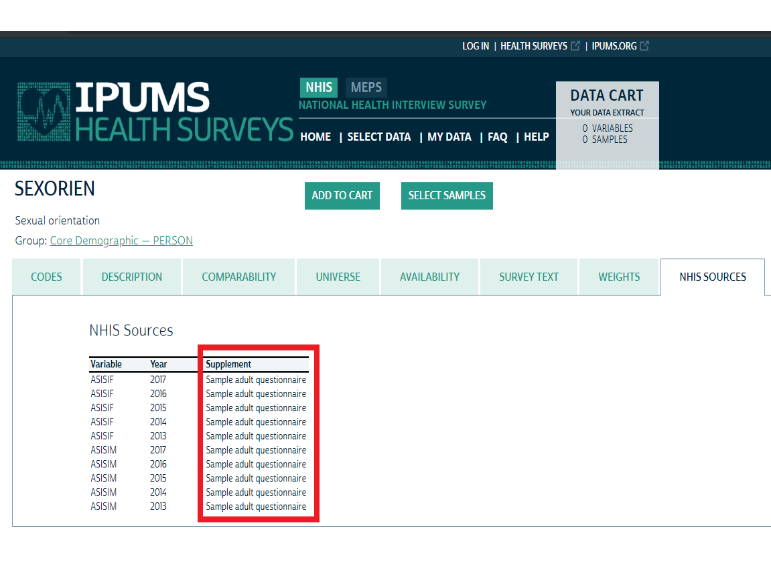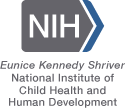Using IPUMS NHIS with restricted access NHIS data in the FSRDC
What is the FSRDC?
- Federal Statistical Research Data Centers (FSRDCs) are partnerships between federal statistical agencies and research institutions. At these secure environments, authorized researchers may access restricted-use microdata for statistical purposes.
- Approved researchers can access data from the Agency for Healthcare Research and Quality (AHRQ), Bureau of Labor Statistics (BLS), Census Bureau, and National Center for Health Statistics (NCHS).
Why use the IPUMS version of NHIS in the FSRDC?
- Take advantage of the data harmonization and cleaning already done by IPUMS Health Surveys by bringing your IPUMS extract into the FSRDC.
- Browse our searchable web-based documentation system for available variables, recommended sampling weights, and analytic considerations.
- Access versions of the data with consistently named and coded variables across all available years of data.
- Select only the variables and years of data that you need for your analysis using an intuitive web "shopping" interface.
- Download the data in your preferred format: Stata, SAS, SPSS, R, fixed width (.dat), or comma-separated values (.csv).
- Record your selections in your IPUMS account to make it easy to quickly revise your extract to add/drop variables and years.
- Get a jump start on the portions of your analysis that utilize public-use versions of the data. Write and troubleshoot code to construct your unique analytical variables and prepare analyses while you have access to resources not available inside the FSRDC (e.g., internet), allowing you to maximize your time in the FSRDC.
What information is in the Restricted NHIS files?
- Finer geographic detail
- Country of birth and related immigration data
- State and year of birth
- Detailed race and Hispanic origin data
- Exact dates of events
- For more information, visit the NCHS/CDC page on accessing NHIS in the FSRDC.
How do I talk about IPUMS data in the proposal?
- IPUMS provides harmonized versions of the NHIS data collected by the National Center for Health Statistics (NCHS). IPUMS does not collect these data. IPUMS data should be listed as an external or user-provided data source.
- You will be required to submit a data dictionary as part of your proposal; highlight the variables necessary to merge IPUMS and restricted access versions of NHIS data in this section of the proposal.
- A list of unique identifiers in the NHIS is available from IPUMS Health Surveys.
- Remember that IPUMS variable names are not necessarily the same as original NHIS variable names. Compare variable names between IPUMS and NCHS versions using the concordance tool
- To access IPUMS NHIS data in the FSRDC, you will need to provide NCHS with the IPUMS data file(s) you plan to bring into the FSRDC; this must be a SAS-formatted data file.
- Here is more information on converting data formats between SAS and other statistical packages.
- An FSRDC analyst for NCHS will merge the restricted variables and any identifiers onto your data file for you and have it uploaded to your FSRDC project space.
- When noting data sources in table shells in your proposal, remember that the restricted access NCHS version of NHIS is different than the IPUMS version of public use NHIS data.
Sample Proposal Language
Sample language for including IPUMS NHIS as a non-NCHS data:
User-supplied data file: IPUMS Health Surveys NHIS (IPUMS NHIS). This file will include data from the harmonized version of NHIS data that is produced by IPUMS. We will use IPUMS NHIS variables that are based on NHIS household, family, person, sample adult, and sample child files. The IPUMS NHIS contains NHIS public-use-file identification number (NHISPID) that will be used to merge the file to restricted NHIS data. The file delivered to NCHS will be called ipums_nhis_data.sas7bdat.
Note that this sample language clearly includes:
- Identification of IPUMS NHIS as a harmonized version of NHIS data that is produced by IPUMS.
- The name of the file that contains IPUMS data to be merged with restricted data.
- File(s) to be merged with restricted NHIS data are in a SAS format.
- The name of the original NHIS files from which the harmonized IPUMS variables are drawn. This information is available on the "NHIS Sources" tab of IPUMS variable pages (pictured below).

Sample language for how to merge IPUMS data with restricted data:
IPUMS NHIS merge to NHIS Restricted: Our public use file, which will contain harmonized variables, will be merged to the restricted NHIS file at the person level for each year in 2003-forward. The year-specific linking key can be constructed by concatenating HHX, FMX, and FPX; these variables are included in both the IPUMS and NCHS versions of the data. The NCHS analyst will need to merge the restricted NHIS data with the IPUMS NHIS data one year at a time by this linking key. IPUMS NHIS data will include all years in a single file; the IPUMS variable YEAR reports the survey year.
Note that this sample language clearly includes:
- The name(s) of the appropriate linking keys in the IPUMS NHIS and restricted NHIS data files for the years of interest. Information on linking keys for all years is available here.
- Instructions for appropriate merging of IPUMS and restricted NHIS data.
Gaining FSRDC access
- Researchers interested in utilizing restricted access NHIS data in an FSRDC will need to submit a proposal and obtain Census Bureau Special Sworn Status before gaining access. The process of submitting a proposal and acquiring Special Sworn Status takes time (a minimum of 6 months), so get started early.
- Researchers interested in using restricted NHIS data in an FSRDC should note that there must be an FSRDC administrator on-site to use the data; not all FSRDCs have a full time administrator. Contact your local FSRDC administrator for more information.
- For more information on accessing an FSRDC to analyze restricted use NHIS files, visit the NCHS/CDC page on the FSRDC proposal process.
Additional Resources
- Fees associated with accessing data in the FSRDC vary, but may include:
- NCHS data management fees
- NCHS project renewal and amendment fees
- FSRDC access fees (depending on the FSRDC and your institutional affiliation, there may be additional fees for daily use of the FSRDC)
- For more information on fees, visit the NCHS/CDC page on Fees and Invoicing for FSRDC access.
- List of existing FSRDCs
- Please note that FSRDC administrators are a great resource, but for accessing NHIS data in an FSRDC, your best point of contact is an NCHS analyst (RDCA@cdc.gov).
Supported By




